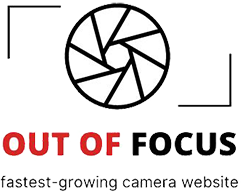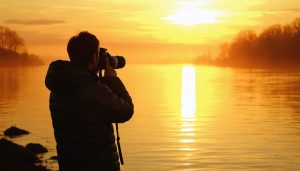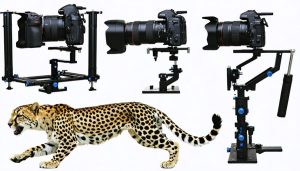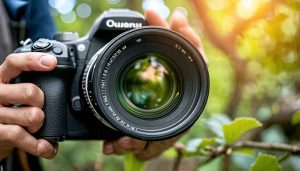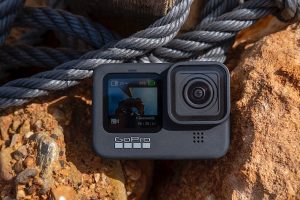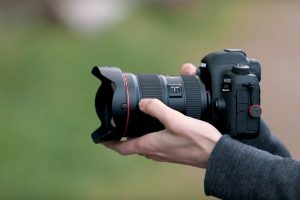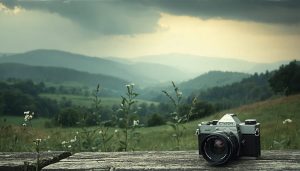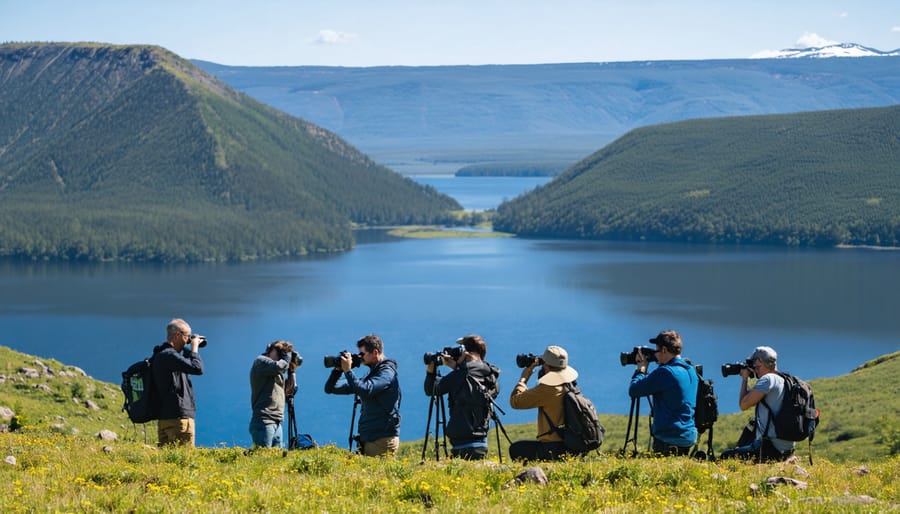
Immerse yourself in the raw beauty of nature while mastering the art of conservation-focused photography through expertly guided workshops. These transformative experiences combine technical expertise with environmental conservation through photography, enabling participants to capture stunning images while minimizing their ecological footprint. Professional photographers lead small groups through pristine landscapes, teaching advanced composition techniques, wildlife tracking, and responsible approach methods that respect natural habitats. From misty mountain dawns to intimate encounters with endangered species, these workshops equip photographers with both the technical skills and ethical framework needed to document our planet’s precious ecosystems. Whether you’re wielding a professional DSLR or learning the basics of landscape composition, specialized nature photography workshops offer hands-on experience in real-world conditions while fostering a deeper connection with the natural world.
Why Sustainable Photography Workshops Matter
The Environmental Impact of Traditional Photo Tours
Traditional photo tours, while offering incredible opportunities for capturing nature’s beauty, often come with significant environmental challenges. Large groups of photographers trampling through sensitive ecosystems can damage vegetation, disturb wildlife habitats, and leave lasting impacts on the landscape. The drive to get the “perfect shot” sometimes leads to participants venturing off designated paths or getting too close to wildlife, causing unnecessary stress to animals and potential damage to their natural behaviors.
The carbon footprint of these workshops is another concern. Many traditional tours involve long-distance travel, multiple vehicle movements between locations, and extensive use of resources in remote areas. Equipment-heavy workshops often require multiple support vehicles, increasing the environmental impact further.
Additionally, the popularity of certain photographic locations has led to overcrowding issues. Famous spots can become victims of their own success, with dozens of photographers gathering at sunrise or sunset, leading to soil erosion, waste management problems, and disruption of local ecosystems. This impact is particularly noticeable in fragile environments like alpine meadows, wetlands, and desert landscapes where recovery from human interference can take years.

The Rise of Leave-No-Trace Photography
In recent years, the photography community has witnessed a significant shift towards more environmentally conscious practices. The concept of “Leave No Trace” has evolved from a hiking principle to become a cornerstone of modern nature photography. This movement emphasizes sustainable photography principles that protect the natural environments we love to capture.
Today’s nature photographers are increasingly aware of their impact on delicate ecosystems. This includes being mindful of wildlife disturbance, staying on designated trails, and avoiding the manipulation of natural elements for the sake of a shot. Workshop leaders are now incorporating these ethical practices into their curriculum, teaching participants how to capture stunning images while preserving the integrity of natural locations.
The rise of leave-no-trace photography has also sparked innovations in gear and techniques. Photographers are embracing quieter equipment, using longer lenses to maintain distance from wildlife, and learning to work with natural light instead of artificial illumination. These practices not only protect the environment but often result in more authentic and compelling images that truly capture the essence of untouched nature.
Key Features of Sustainable Photography Workshops
Small Group Sizes and Limited Impact
Small group sizes are a cornerstone of responsible nature photography workshops, offering benefits that extend far beyond the quality of instruction. With typically 6-8 participants per guide, these intimate settings ensure each photographer receives personalized attention while minimizing the collective impact on delicate ecosystems.
Consider a scenario where twenty photographers crowd around a nesting bird – the disturbance could cause the parent to abandon its nest. In contrast, a small group can maintain a respectful distance while still capturing stunning images. This approach allows workshop leaders to effectively demonstrate techniques and provide hands-on guidance without overwhelming the natural environment.
Limited group sizes also enable better access to sensitive locations. Many protected areas and wildlife sanctuaries restrict visitor numbers, and smaller groups can navigate narrow trails or position themselves in limited viewing areas without causing erosion or habitat disruption. This creates opportunities for unique photographic perspectives while preserving the integrity of the location.
Moreover, intimate groups foster a collaborative learning environment. Participants can easily share experiences, ask questions, and learn from each other’s techniques without competing for space or subjects. This social aspect enhances the learning experience while ensuring that wildlife encounters remain peaceful and undisturbed.
Workshop organizers who prioritize small groups demonstrate their commitment to both photography education and environmental stewardship, creating a win-win situation for participants and nature alike.

Local Conservation Partnerships
Nature photography workshops increasingly forge meaningful partnerships with local conservation organizations, creating a symbiotic relationship that benefits both wildlife and photographers. These collaborations often provide workshop participants with exclusive access to protected areas while generating crucial funding for conservation efforts.
Many workshops now allocate a portion of their fees directly to local environmental initiatives. For instance, workshops operating in rainforest regions frequently partner with indigenous communities and conservation groups to support habitat preservation and wildlife monitoring programs. These partnerships not only enhance the photographic experience but also contribute to sustainable tourism practices.
Workshop participants often get the opportunity to document conservation projects in action, creating powerful visual narratives that help raise awareness about environmental issues. Some programs even incorporate citizen science elements, where photographers contribute their images to wildlife databases and research projects.
Local communities benefit through employment opportunities as guides, logistics coordinators, and cultural interpreters. This economic incentive helps strengthen the connection between conservation and community development. Many workshops also include cultural exchange components, where participants learn traditional ecological knowledge from local experts.
The most successful partnerships create lasting relationships between photography communities and conservation organizations, leading to ongoing support through photo exhibitions, fundraising events, and awareness campaigns. These collaborations demonstrate how nature photography can be a powerful tool for environmental stewardship while providing photographers with authentic and meaningful experiences.
Essential Skills Taught in Eco-Friendly Workshops

Wildlife Photography Ethics
Wildlife photography demands not just technical skill but also a deep respect for nature and its inhabitants. The key principle is simple: the well-being of wildlife always comes first. When participating in nature photography workshops, maintaining a safe distance from animals is crucial to avoid causing stress or altering their natural behavior.
Never bait or lure wildlife for a shot, as this can disrupt their natural feeding patterns and create dangerous dependencies. Similarly, avoid disturbing nests, dens, or breeding areas, as this can have severe consequences for animal families. If an animal shows signs of distress – such as stopping feeding, fleeing, or displaying aggressive behavior – it’s time to back away.
Use appropriate equipment, like telephoto lenses, that allow you to capture intimate wildlife moments from a respectful distance. Flash photography should be avoided with most wildlife, as it can temporarily blind and disorient animals, particularly nocturnal species.
Consider the timing of your photography sessions. Many workshops schedule activities during golden hours, which not only provides beautiful light but also coincides with natural wildlife activity periods. However, be mindful not to interfere with crucial feeding or mating times.
Research local regulations and protected species before your workshop. Many locations have specific guidelines about approaching wildlife, and responsible workshop leaders will ensure these rules are strictly followed. Remember that getting the perfect shot should never come at the expense of an animal’s welfare.
Share your wildlife images responsibly by avoiding the disclosure of sensitive locations that might lead to over-tourism or wildlife harassment. This helps protect vulnerable species and their habitats for future generations to observe and photograph.
Sustainable Field Practices
As photographers, our first responsibility is to protect the natural environments we capture. Understanding and implementing minimal-impact photography techniques is essential for preserving these precious ecosystems for future generations.
During workshops, we emphasize the “leave no trace” principle, which starts with staying on designated trails and viewing areas. This not only protects sensitive vegetation but also prevents wildlife disturbance. When photographing animals, maintain a safe distance and never bait or lure them for a shot – the best wildlife photos capture natural behavior.
Timing is crucial for responsible nature photography. We schedule our sessions during optimal light conditions while avoiding critical breeding or nesting periods. Early morning and late afternoon not only offer the best light but also minimize our impact on wildlife’s daily routines.
Equipment placement deserves careful consideration. Use existing clearings for tripods rather than crushing vegetation, and avoid removing branches or manipulating the environment for a better composition. When photographing in wetlands or sensitive areas, specialized equipment platforms can help distribute weight and prevent damage to delicate ecosystems.
Workshop participants learn to work with natural light whenever possible, reducing the need for artificial lighting that might disturb wildlife. When artificial light is necessary, we teach techniques to minimize its use and impact. This includes using diffused flash, reducing flash power, and considering alternatives like reflectors.
Remember, great nature photography isn’t just about capturing stunning images – it’s about being a responsible steward of the environment we’re privileged to photograph.
Choosing the Right Sustainable Workshop
Environmental Credentials to Look For
When evaluating nature photography workshops for their environmental credentials, look for several key indicators that demonstrate genuine commitment to sustainability. First, check if the workshop organizers have partnerships with recognized conservation organizations or local environmental groups. These collaborations often indicate a deeper understanding of ecological concerns and responsible practices.
Look for workshops that explicitly outline their environmental policies, including guidelines for minimal impact photography and specific rules about maintaining distance from wildlife. The best workshops will have clear protocols for staying on designated paths and respecting natural habitats.
Consider whether the organizers use eco-friendly photography equipment and encourage sustainable practices among participants. This might include recommendations for rechargeable batteries, plastic-free packaging, or carbon offset programs for travel-related emissions.
Verify if the workshop size is intentionally limited to reduce environmental impact. Smaller groups typically cause less disruption to wildlife and natural areas. Additionally, check if the workshop includes educational components about local ecosystems and conservation challenges.
Look for certifications or memberships in sustainable tourism organizations. While not all legitimate workshops will have formal certifications, those that do demonstrate an extra level of commitment to environmental stewardship. Finally, read reviews from past participants specifically mentioning the workshop’s environmental practices and their approach to nature conservation.
Questions to Ask Workshop Providers
Before committing to a nature photography workshop, it’s crucial to ask providers specific questions about their environmental practices and policies. Here are essential inquiries that will help you choose a workshop that aligns with both your photographic and environmental values:
Ask about their approach to wildlife interaction. How do they ensure minimal disturbance to animals? What distance guidelines do they follow? Responsible providers will have clear protocols about maintaining safe distances and avoiding any manipulation of wildlife or their habitats.
Inquire about group sizes and impact management. Smaller groups typically create less environmental impact and provide better learning opportunities. Find out how they manage trail use and camping practices if applicable.
Question their local community engagement. Do they work with indigenous guides or local conservation groups? How do they ensure their presence benefits rather than disrupts local communities?
Investigate their sustainability practices. Do they have a “leave no trace” policy? How do they handle waste management during workshops? What measures do they take to minimize their carbon footprint?
Ask about their credentials and partnerships. Are they affiliated with any conservation organizations? Do they hold permits for the areas they visit? Legitimate operators will readily share this information.
Finally, request examples of how they educate participants about environmental responsibility. A quality workshop should include guidance on ethical nature photography practices and conservation awareness alongside technical instruction.
Remember, reputable providers will welcome these questions and should provide detailed, transparent answers that demonstrate their commitment to responsible nature photography.
Nature photography workshops play a vital role in promoting both artistic excellence and environmental stewardship. By participating in sustainable photography workshops, photographers don’t just enhance their technical skills; they become advocates for the natural world they capture through their lenses.
These workshops serve as powerful educational platforms where participants learn to document nature’s beauty while minimizing their environmental impact. Through hands-on experience and expert guidance, photographers develop a deeper understanding of ecosystems, wildlife behavior, and the delicate balance that must be maintained to preserve these natural spaces for future generations.
The ripple effect of sustainable photography workshops extends far beyond individual skill development. As workshop participants share their images and experiences, they help raise awareness about conservation issues and inspire others to appreciate and protect natural habitats. Many workshop graduates go on to become environmental advocates, using their photography to support conservation initiatives and document environmental challenges.
Moreover, sustainable workshops contribute directly to local economies while demonstrating that nature-based tourism can coexist with conservation efforts. By choosing workshops that prioritize environmental responsibility, photographers invest in a future where artistic pursuit and nature preservation work in harmony.
As we face growing environmental challenges, the role of nature photography workshops in conservation becomes increasingly significant. They represent a perfect synthesis of education, artistry, and environmental responsibility, training the next generation of photographers to be not just skilled artists, but conscious stewards of the natural world.
